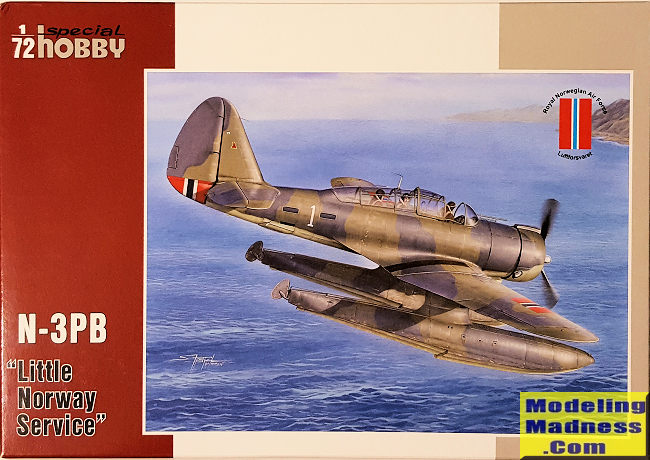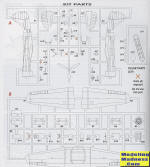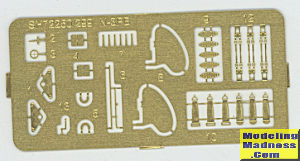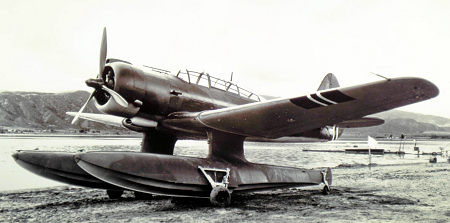
Special Hobby 1/72 Northrop N-3PB
| KIT #: | SH 72299 |
| PRICE: | $25.00 or so |
| DECALS: | Basically one options with several numbers |
| REVIEWER: | Scott Van Aken |
| NOTES: | Short run with p.e. parts |

| HISTORY |
| THE KIT |
 This
is one of the more modern Special Hobby kits in that it has an injected
canopy and does not require resin to provide small parts. It does, however,
still include a photo etch fret. This fret supplies the seat harnesses, some
cockpi
This
is one of the more modern Special Hobby kits in that it has an injected
canopy and does not require resin to provide small parts. It does, however,
still include a photo etch fret. This fret supplies the seat harnesses, some
cockpi t
handles and such, as well as bits for the rudder assemblies. Note also that
cables for the rudders need to be made from wire or stretched sprue. As a
note, the parts image does not include the floats or beaching gear.
t
handles and such, as well as bits for the rudder assemblies. Note also that
cables for the rudders need to be made from wire or stretched sprue. As a
note, the parts image does not include the floats or beaching gear.
The cockpit is well appointed
with controls fore and aft, seats with rudder pedals for the front as well as
various bits and pieces to fit on the sidewalls. A center raised section with a
DF antenna is included and while it probably wasn't used on these planes, a rear
machine gun. There is also a ventral gun that drops down on a door which is
installed near the end of the build. Again, I doubt it was fitted to these
planes as they were used for training.
 An
engine that is a forward half face is provided with the cowling
split vertically. There is no prop shaft so one apparently just butt joins the
prop to the engine face. Though the instructions show the prop with full black
blades, period photos show a bare metal prop and only the back of the blades are
black. The sole extant airframe does have black blades on both sides. Holes will
have to drilled for the wing guns, but again, the planes in this boxing seem to
be unarmed. The canopy appears to be quite nicely done with fairly prominent
frame lines that will make masking much easier.
An
engine that is a forward half face is provided with the cowling
split vertically. There is no prop shaft so one apparently just butt joins the
prop to the engine face. Though the instructions show the prop with full black
blades, period photos show a bare metal prop and only the back of the blades are
black. The sole extant airframe does have black blades on both sides. Holes will
have to drilled for the wing guns, but again, the planes in this boxing seem to
be unarmed. The canopy appears to be quite nicely done with fairly prominent
frame lines that will make masking much easier.
I nstructions
are typical for Special Hobby in that they are well done with a goodly amount of
color. Gunze is the paint of choice. Markings are provided for three airplanes
that differ only in aircraft number. The planes are in the standard maritime
colors of extra dark sea grey/dark slate grey over sky, which means the two
upper colors will be very close to each other. Deciphering where the demarcation
lines are in the kit instructions is very difficult so I recommend scanning the
page and doing some photo manipulation to make them more identifiable. The small
sheet is nicely printed and should work very well with standard setting
solutions.
nstructions
are typical for Special Hobby in that they are well done with a goodly amount of
color. Gunze is the paint of choice. Markings are provided for three airplanes
that differ only in aircraft number. The planes are in the standard maritime
colors of extra dark sea grey/dark slate grey over sky, which means the two
upper colors will be very close to each other. Deciphering where the demarcation
lines are in the kit instructions is very difficult so I recommend scanning the
page and doing some photo manipulation to make them more identifiable. The small
sheet is nicely printed and should work very well with standard setting
solutions.
| CONCLUSIONS |
| REFERENCES |
December 2018
Back to the Main Page Back to the Previews Index Page
Back to the Previews Index Page